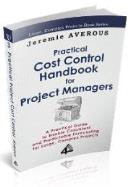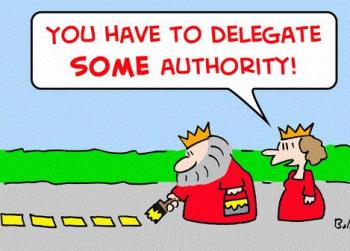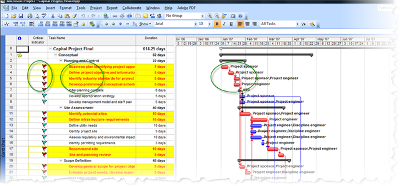Why Accounting and Project Cost Control roles Should be Neatly Separated
One of the most common misconceptions in the field of Project Cost Control is to believe that it is just an extension of Accounting – because it deals with money. Nothing could be furthest from the reality – Project Cost Control primarily requires a deep business understanding so as to be able to produce a sound forecast of the project situation at its completion. In our new White Paper 2014-02 we examine why there is such a difference in project environments and why Project Cost Control and Accounting should be neatly separated.
Financial forecasting is quite straightforward in most industries where the future is the repetition of the past, with a few tweaks. It can be safely left with accounting and usual financial analysis techniques. In projects, activities that are performed are unique. The discipline of Project Cost Control thus evolved as a specific requirement for projects so as to ensure that the Project Manager constantly has access to up-to-date cost information (Actual Cost) and to a proper forecast of the project completion based on sound business understanding.
The best way to keep control in projects is to create, from the beginning, a clear distinction between Accounting and Cost Control at the functional level, and make sure that any carry over work from Accounting, if unavoidable, is limited in scope and time. Our White Paper goes on to describe in detail how the duties can be split between Accounting and Project Cost Control. Read our new White Paper 2014-02 “Why Accounting and Cost Control roles Should be Neatly Separated in Project Organizations”!
Find all these principles of Project Cost Control exposed in a comprehensive manner in our new Handbook,  Practical Project Cost Control for Project Managers (now published – click on the link to see it on Amazon!)
Practical Project Cost Control for Project Managers (now published – click on the link to see it on Amazon!)











Improve Project Forecasting by Taking Into Account Consequential Variances
Project Forecasting (in terms of cost and/or schedule) is often not sufficiently comprehensive and this leads to unpleasant surprises. More than the actual forecasting issues related to a single type of activity, consequential variances between different project stages and activity types are often ignored or underestimated. In our new White Paper 2014-01 ‘How to Improve Project Forecasting: Taking Into Account Consequential Variances between Project Stages’ we investigate how to improve significantly project forecasting by dedicating sufficient attention to consequential variances.
A single event can have ripple effect through your forecasting sending flat to the ground
Consequential variances are particularly important as events in one area of the project can easily have rippling consequences on very different areas of the project. While re-forecasting taking into account direct effects is not always easy, considering consequential variances is often overseen. And these consequential effects are often those that have the most impact on the project forecast!
In general, the role of the Project Controls Manager, who has an overview on the entire project unfolding, as well as a keen understanding of the consistency between cost, scope and schedule, is central to a proper evaluation of consequential variances.
Identifying and evaluating consequential variances require sound business understanding and elaborate comprehension of the ripple effects of any particular change to the project program. It is key to maintaining a sound forecast of your project. Read our new White Paper 2014-01 ‘How to Improve Project Forecasting: Taking Into Account Consequential Variances between Project Stages’ to fully understand the issue!
Find all these principles of Project Cost Control exposed in a comprehensive manner in our new Handbook, Practical Project Cost Control for Project Managers (now published – click on the link to see it on Amazon!)
Practical Project Cost Control for Project Managers (now published – click on the link to see it on Amazon!)